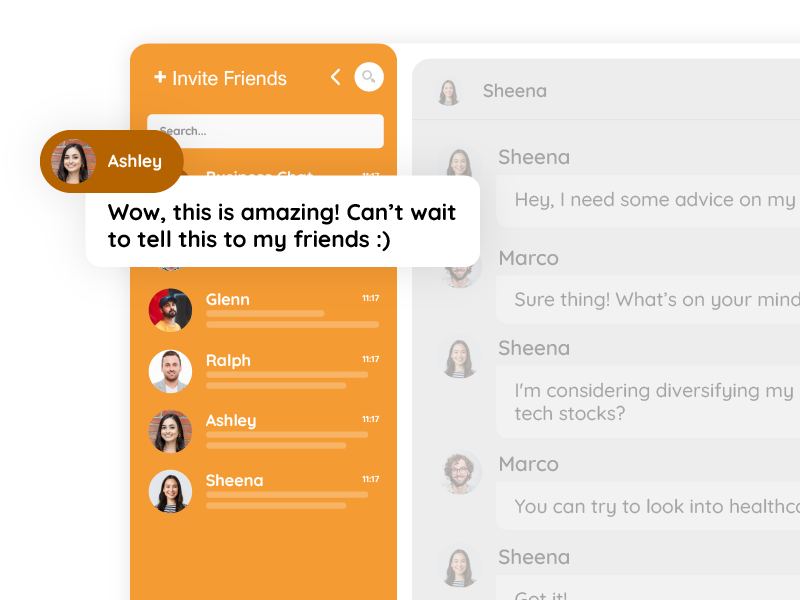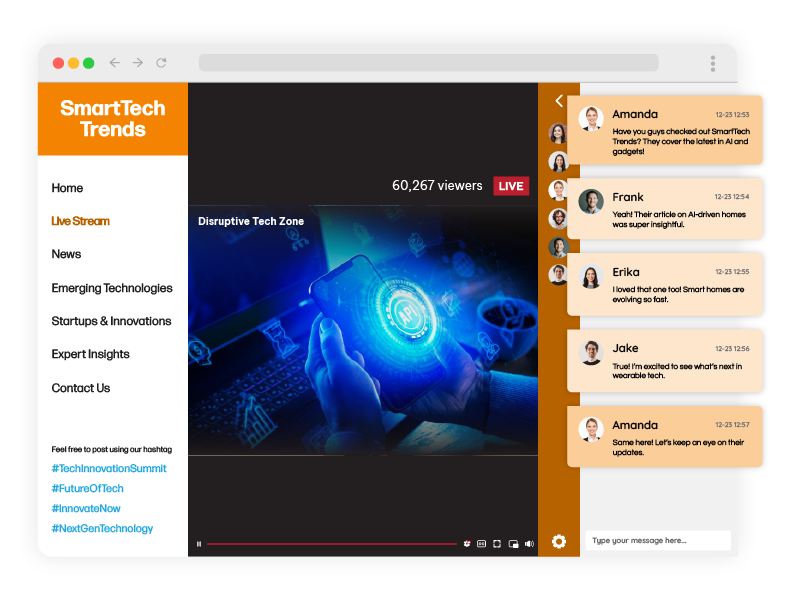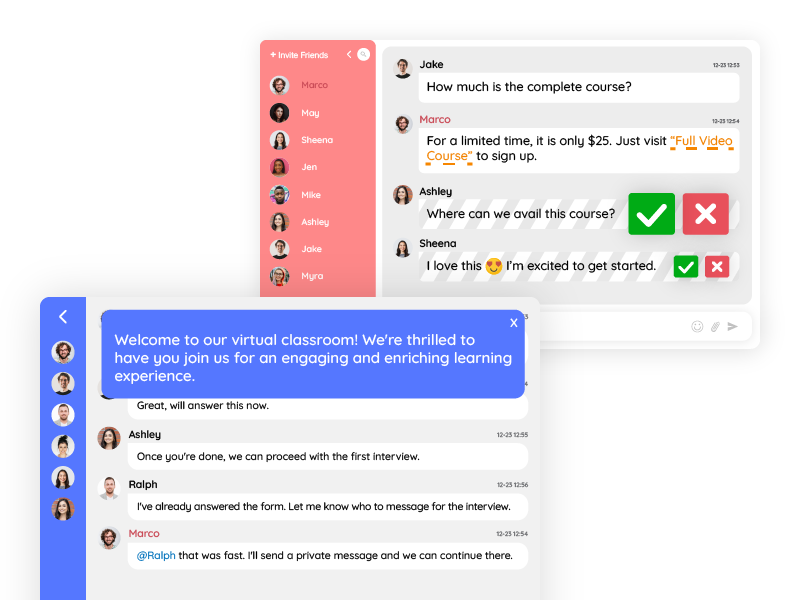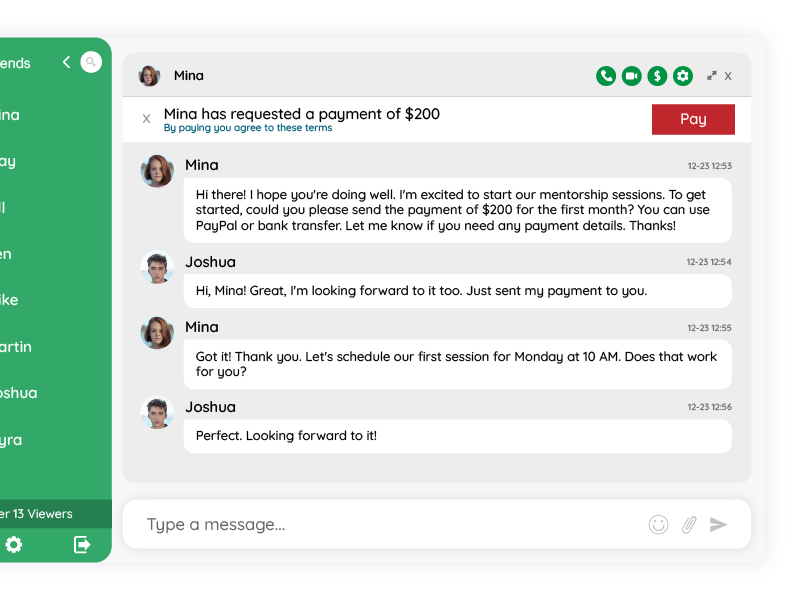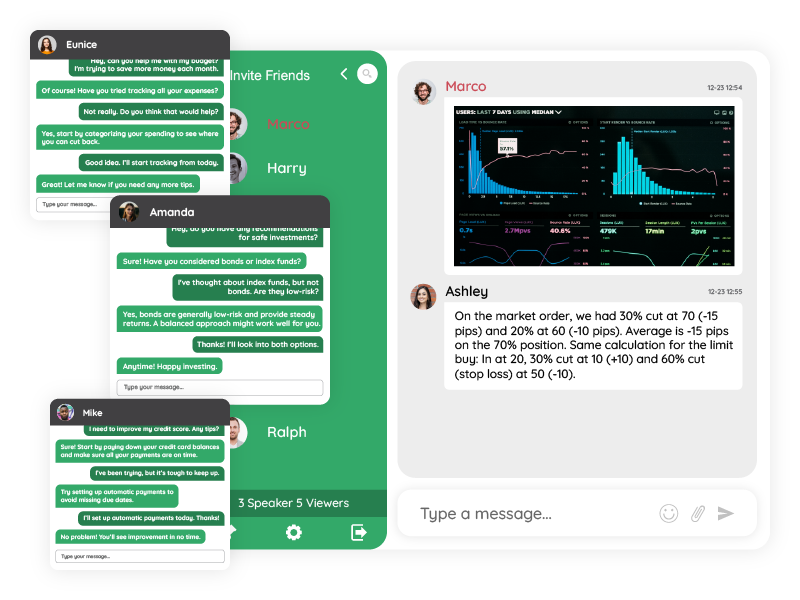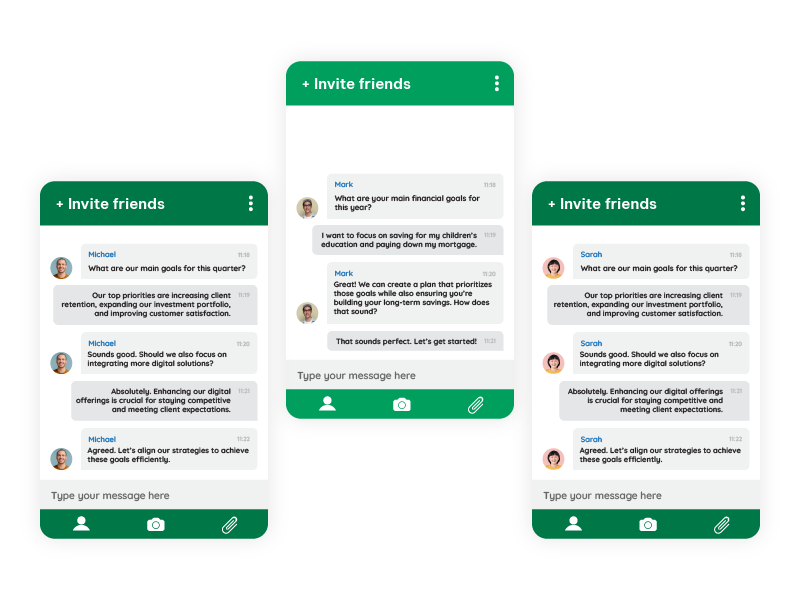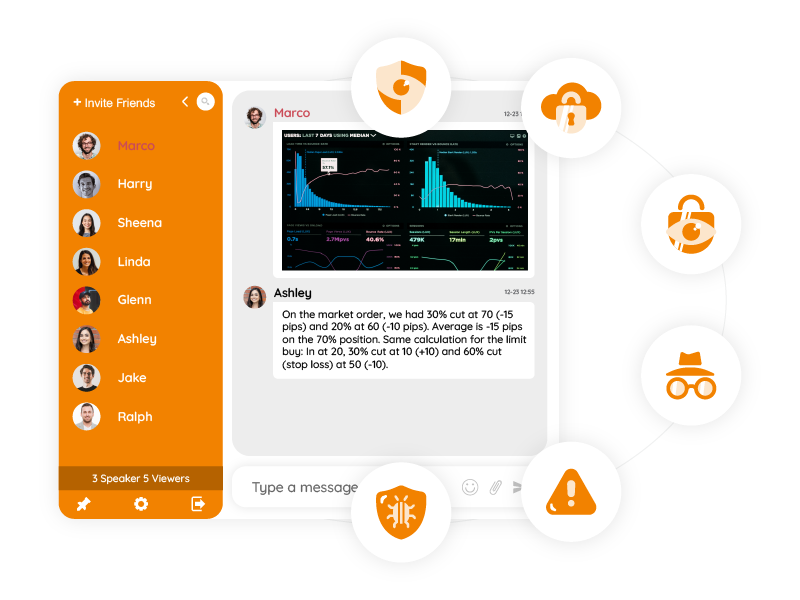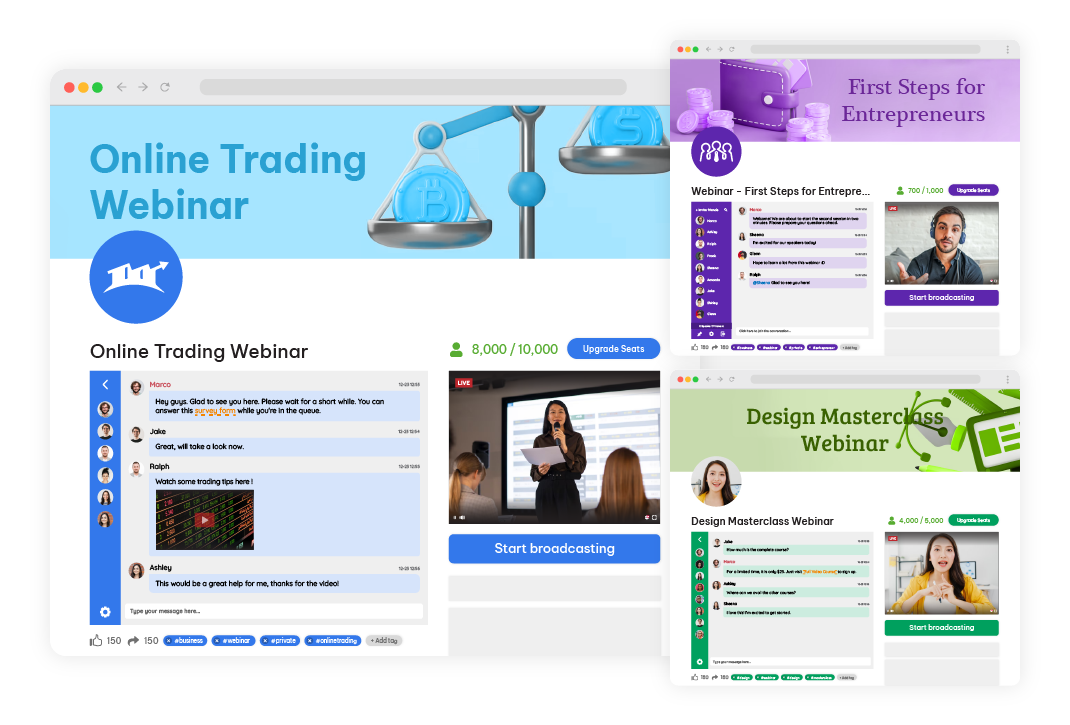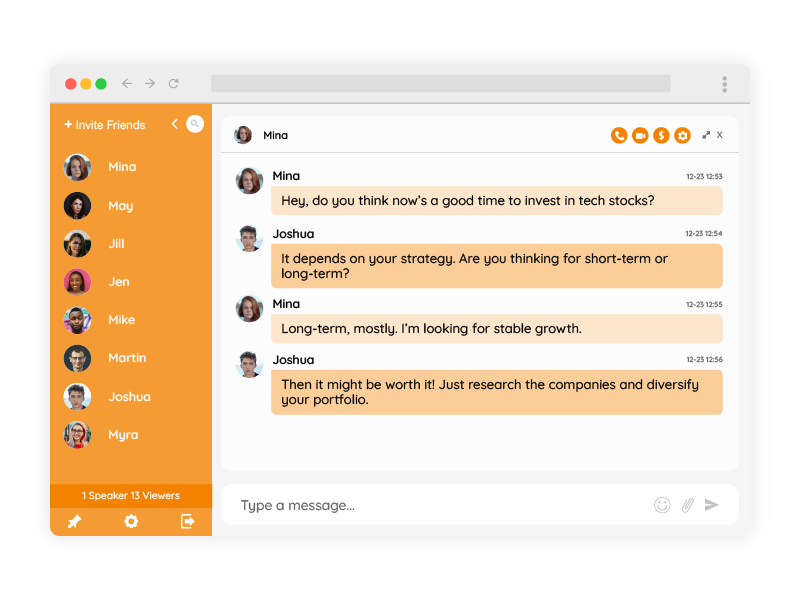When you host a virtual event, whether it’s a conference, webinar, live product launch, or fireside chat, your success hinges on one thing: engagement.
Sure, you’ve got high-profile speakers, a polished agenda, and maybe even live streaming. But if your audience isn’t interacting, they’re just passive viewers. That’s not what a great event looks like.
Most platforms offer a basic chat box, usually floating awkwardly on the side. But here’s the truth: a chat box isn’t a community. If you want real interaction, connections, and engagement that lives beyond the event, then you need a social chat room.
Let’s dive into what that means, how it changes your virtual event dynamics, and exactly how to set one up (including code-free options).
Social Chat Room vs. Chat Box: What’s the Difference?
Chat Box (aka, The Basic Add-On)
- Limited to one room or thread.
- Short-lived, disappears with the stream.
- Hard to moderate.
- Not customizable or brandable.
- Offers minimal user profiles (just names).
Chat boxes are often an afterthought. They’re technically “chat,” but functionally dead. They’re not designed to spark or sustain community.
The Social Chat Room (aka, The Engagement Engine)
- Persistent and structured.
- Offers multiple rooms or topics.
- Full user identity (names, avatars, roles).
- Moderation tools.
- Can be embedded, branded, and integrated.
In short: a social chat room is a live, persistent group chat tailored to your event’s flow. It supports not just talk, but connection.
Why Passive Viewers Hurt Your Event
Without interaction, your event becomes a broadcast. Viewers come in, stay silent, and drop out.
That’s a problem.
- You get no feedback.
- Your speakers feel like they’re talking to a wall.
- Your audience retains less, asks fewer questions, and doesn’t return.
Social interaction isn’t optional; it’s the foundation of retention and value.
A chat room turns attendees from viewers into participants.
Real Use Cases: What Happens When You Add a Social Chat Room
Let’s look at how real-world events improve when they go from “chat box” to full social chat experience:
Webinars with Live Q&A
Speakers get questions in real-time. A moderator filters and highlights the best ones. No more random interruptions or missed audience moments.
Product Launches
Launch events let customers share reactions, ask pricing questions, and drop suggestions, all in a branded chat beside the stream.
Fireside Chats
Attendees discuss the topic mid-stream, compare ideas, and follow up afterwards. The conversation continues beyond the talk.
Virtual Conferences
Use separate chat rooms for sessions, lounges, breakout tracks, and sponsors. It feels like a real hallway track, just online.
How to Add a Social Chat Room to Your Virtual Event
There are two simple ways to add a social chat room to your event, depending on your platform.
A. Embed the Chat Room With JavaScript
If your event is on a custom-built page or platform (e.g., your own site, WebinarJam, Vimeo embed, IVS stream), just drop in a chat room using the embed code from your admin panel.
Here’s an example:
<div style="height: 500px;">
<div id="rt-acea1eee32a83109a2c857ccee72c95x"></div>
<script src="https://rumbletalk.com/client/?xxxxxxxx"></script>
</div>
- You get this code from the Embed section in your admin panel.
- Replace xxxxxxxx with your actual chat hash.
- Paste this right next to or below your video stream.
This gives attendees a live, styled chat room they can use without creating new accounts, if auto-login is set up.
B. Use WordPress? There’s a Plugin for That
If you’re hosting the event on a WordPress-based site, here’s how to add the chat room:
- Install the RumbleTalk plugin.
- Go to settings and paste your chat hash.
- Add the chat to any event page using the shortcode:
- Your RumbleTalk plug-in is not connected to your RumbleTalk account. Go to the plug-in's settings page to connect your account.
It’s live in under a minute, fully integrated with your WordPress login system.
Features That Make a Social Chat Room Event-Ready
Let’s break down what makes a social chat room so valuable compared to a standard chat box:
Multiple Rooms
Segment conversations by session, topic, language, or role (e.g., VIP vs. general audience).
Auto Login / Single Sign-On (SSO)
Attendees already signed into your site don’t need to re-authenticate. The chat logs them in with name and avatar automatically.
Moderation Tools
Moderators can:
- Mute users
- Approve messages before posting (pre-moderation)
- Ban spammers
- Pin messages (e.g., session links, giveaways)
Persistent History
Chats don’t vanish when the stream ends. Attendees can return and review key moments or resources later.
Branded Experience
Customize colors, fonts, and logos to match your event theme. It’s not generic; it’s yours.
Real-Time Engagement = Better Outcomes
Attendees:
- They feel connected.
- They get answers.
- They participate more actively.
Organizers:
- You collect feedback instantly.
- You see what’s working (and what’s not).
- You create a reason to return.
Sponsors or Clients:
- They see the buzz.
- They get direct interaction with the audience.
- They’re more likely to invest again.
Social Features That Go Beyond the Event
A social chat room also gives you post-event value:
- Use the room to share replays and slides.
- Keep it open for post-event discussion.
- Upsell premium content, future events, or memberships.
- Turn temporary guests into a permanent community.
This means your event has long tail value, not just a one-day spike.
Common Pitfalls with Basic Chat and How a Social Chat Room Solves Them
| Problem | With a Basic Chat Box | With a Social Chat Room |
| Users disappear after event | No history or follow-up | Persistent and accessible |
| Spam & trolls | No moderation | Full controls for admins |
| Confusion during talks | One messy thread | Segmented rooms or pinned messages |
| Anonymous audience | No profiles | Full identity and roles |
| No branding | Generic UI | Fully customizable |
Advanced Tips to Maximize Impact
Here’s how to really get the most from your social chat room:
- Assign a chat moderator for each session.
- Pin important messages: schedule, giveaways, session links.
- Announce your chat room early in your email campaigns.
- Create multiple rooms: main stage, breakout, networking.
- Seed the room with early team conversation to avoid a “quiet room” at launch.
- Use mobile-friendly layout so viewers on phones can join the chat easily.
Events Without Social Chat Are Just Webinars
We’re past the point where streaming a speaker on a webpage counts as a virtual event.
Today’s attendees expect interaction, community, and a reason to stay.
A social chat room isn’t just a nicer interface. It’s the heart of your event’s energy, where learning, connecting, and reacting all happen together.
If you’re still using a default chat box, it’s time to upgrade. A true social chat room will transform your event from passive to powerful and keep your audience coming back for more.

